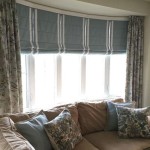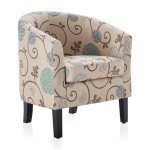The Enduring Appeal of Big Windows in Living Rooms
Large windows in living rooms represent a significant design element that transcends mere aesthetics. They serve a multifaceted purpose, impacting the light quality, spatial perception, energy efficiency, and overall ambiance of the home. The incorporation of expansive glazing into living room design has evolved considerably over time, driven by advancements in materials technology and a growing appreciation for the benefits of natural light and connection with the outdoors.
Historically, windows were primarily functional, providing basic illumination and ventilation. Their size was often constrained by the limitations of glass manufacturing and structural engineering. Smaller windows were also more energy efficient, a critical consideration prior to the widespread availability of modern insulation and heating systems. However, as technology progressed, larger panes of glass became more accessible and affordable, paving the way for more ambitious architectural designs that prioritized natural light and panoramic views.
The modern trend towards big windows in living rooms is further influenced by several factors. The increasing urbanization of society has led to a desire to reconnect with nature, even within the confines of the home. Large windows offer a visual link to the outside world, bringing the beauty of landscapes and gardens into the living space. Simultaneously, interior design philosophies have shifted towards open-concept layouts and minimalist aesthetics, which often incorporate large windows to maximize the flow of natural light and create a sense of spaciousness.
From a practical standpoint, big windows can significantly reduce the need for artificial lighting during daylight hours, leading to energy savings and a more sustainable lifestyle. The psychological benefits of natural light are also well-documented, including improved mood, increased productivity, and a reduction in stress levels. Consequently, incorporating large windows into living room design has become a popular way to enhance both the functional and emotional aspects of the home environment.
Maximizing Natural Light and Ventilation
One of the primary benefits of big windows is their ability to maximize the amount of natural light entering the living room. Proper orientation is crucial in achieving optimal light levels. A south-facing exposure typically receives the most sunlight throughout the day, making it ideal for maximizing warmth and illumination during the winter months. However, it is important to consider the potential for excessive heat gain during the summer, which may necessitate the use of window treatments or overhangs to control solar radiation.
East-facing windows capture the morning sun, providing a bright and invigorating start to the day. West-facing windows, on the other hand, receive the afternoon sun, which can create a warm and inviting atmosphere in the evening. North-facing windows provide diffused, indirect light throughout the day, making them suitable for spaces where consistent illumination is desired without harsh glare. Each orientation offers unique advantages and disadvantages in terms of light quality and energy efficiency.
Beyond natural light, large windows can also enhance ventilation. Operable windows, such as casement, awning, or sliding windows, allow for the circulation of fresh air, which can improve indoor air quality and create a more comfortable living environment. Strategic placement of operable windows can promote cross-ventilation, where air flows through the room from one window to another, creating a natural breeze. This can be particularly effective in reducing the need for air conditioning during milder weather.
To further optimize ventilation and light levels, consider the type of window glass used. Low-E (low-emissivity) glass is designed to reduce the amount of heat transferred through the window, helping to keep the living room cooler in the summer and warmer in the winter. Tinted glass can also reduce glare and heat gain, while clear glass maximizes light transmission. The choice of glass should be carefully considered based on the specific climate and orientation of the living room.
Enhancing Spatial Perception and Aesthetic Appeal
Big windows can dramatically alter the perception of space within a living room. By visually connecting the interior with the exterior, they create a sense of openness and expansion. This is particularly beneficial in smaller living rooms, where large windows can make the space feel significantly larger and less confined. The view beyond the window becomes an integral part of the room's design, blurring the lines between indoors and outdoors.
The aesthetic impact of large windows extends beyond simply providing a view. The natural light that floods the room can enhance the colors and textures of the interior décor, creating a more vibrant and inviting atmosphere. The play of light and shadow throughout the day adds depth and dimension to the space, making it feel more dynamic and engaging. Furthermore, large windows can serve as a focal point in the living room, drawing the eye and creating a sense of visual interest.
The style of the windows themselves can also contribute to the overall aesthetic. Modern homes often feature clean, minimalist window frames that emphasize the expanse of glass. Historic homes may incorporate more ornate window designs with intricate moldings and details. The choice of window style should complement the architectural style of the home and the overall design aesthetic of the living room. The absence of heavy curtains can further highlight the window structure.
The placement of furniture and accessories can also be influenced by the presence of large windows. Avoid blocking the windows with bulky furniture, as this can obstruct the view and reduce the amount of natural light entering the room. Instead, arrange furniture to take advantage of the view and create a comfortable seating area near the windows. The incorporation of indoor plants can further enhance the connection with nature and create a more harmonious living environment and complement the exterior view.
Addressing Energy Efficiency and Privacy Considerations
While big windows offer numerous benefits, it is essential to consider their impact on energy efficiency and privacy. Large expanses of glass can contribute to heat loss in the winter and heat gain in the summer, leading to increased energy consumption. Similarly, large windows can compromise privacy, particularly in urban environments where homes are located close together.
To mitigate heat loss and heat gain, it is important to choose energy-efficient windows with a low U-factor and a low solar heat gain coefficient (SHGC). The U-factor measures the rate of heat transfer through the window, while the SHGC measures the amount of solar radiation that passes through the window. Lower values for both of these metrics indicate better energy performance. Double-paned or triple-paned windows with argon or krypton gas filling can further improve insulation and reduce energy loss. Proper sealing and insulation around the window frames are also crucial for preventing air leakage.
Window treatments can play a significant role in both energy efficiency and privacy. Blinds, shades, and curtains can be used to control the amount of sunlight entering the room, reducing heat gain in the summer and heat loss in the winter. Blackout curtains can provide complete privacy, while sheer curtains allow light to filter through while still obscuring the view from outside. The choice of window treatment should be based on the specific needs of the living room and the desired level of privacy and light control.
Landscaping can also be used to enhance privacy and provide shade. Strategically planted trees and shrubs can block the view from neighboring properties and provide natural cooling during the summer. Deciduous trees are particularly effective, as they provide shade in the summer and allow sunlight to penetrate in the winter. The incorporation of exterior screens or trellises can also offer additional privacy and visual interest.
Smart window technology can also contribute to both energy efficiency and privacy. Smart blinds and shades can be programmed to automatically adjust based on the time of day, weather conditions, or user preferences. Smart glass can be controlled to change its transparency, allowing for instant privacy on demand. These technologies offer a convenient and effective way to optimize the performance of big windows in the living room.

Living Room Window Ideas Pella

10 Living Room Window Ideas To Enhance Your Home

Charming Rustic Cottage Framing Dramatic Views Of Lake Joseph

Large Windows 5 Reasons To Install Throughout Your Home

87 Big Windows Ideas House Design Home Interior

Large Windows For Living Room Marvin Replacement

Modern Living Room Erin Paige Pitts Interiors

30 Living Room Window Styles That Add Character To Your Home

15 Pretty Living Room Windows Home Design Lover

Design Tips When Using Large Windows For The Living Room








